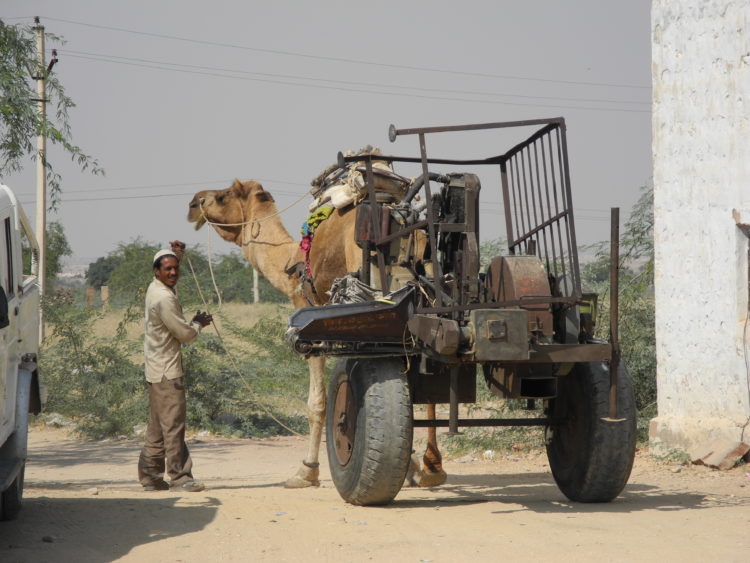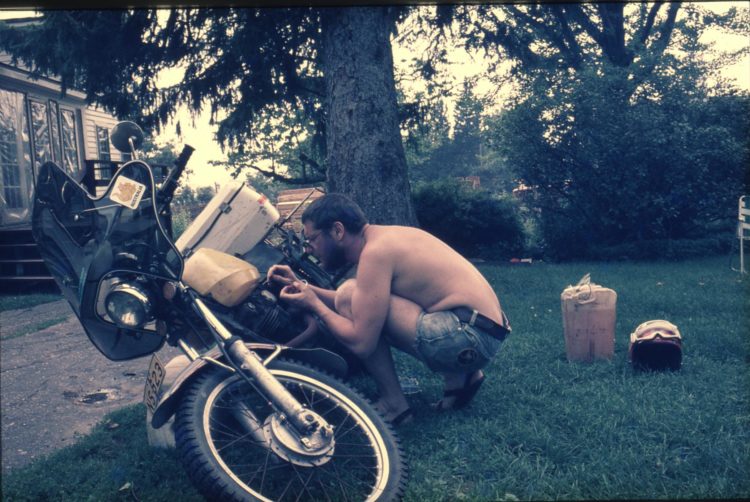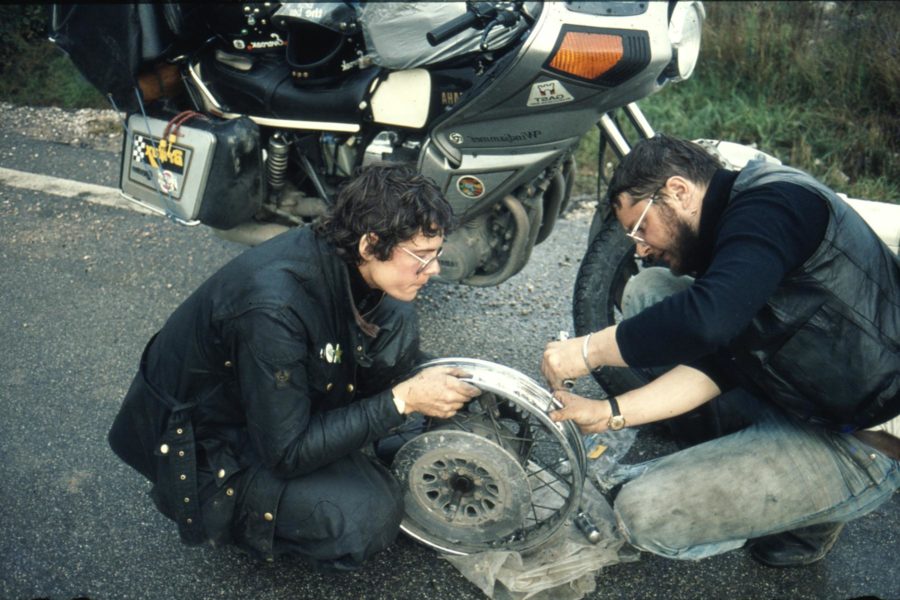I have just realised that I belong in Pakistan. I think it is Pakistan. I was watching a video of a man wearing a simple sindhi cap rewiring a burnt-out armature from a truck starter motor. He worked steadily with only the most basic tools – which admittedly included an electric polishing wheel — to rebuild something which, I presume, he or the owner could either not afford or even manage to replace. He did a beautiful job, re-using just about all of the parts, and the end result was not just functional but also shiny and clean. Like a bought one, as we say.
它让我想起小车间的蓝迪Kotal where 42 years ago I watched an absolute craftsman making a Webley revolver from scratch. Yes, it was a real Webley: it had the firm’s logo and even a serial number on the side. Seemed legit.

This bloke is just baking bread, not making guns, but he has about the same tools.
The next video I watched was of a blacksmith making a knife. A simpler job than making a gun, but illustrative of my point, nonetheless. This chap, unlike the relatively western-looking rewinder of truck armatures in a shirt and pants, was wearing a shalwar kameez made of what looked like sackcloth. The video never showed his face.
He took a roller bearing and heated it in a small charcoal furnace before separating out the races and the balls with a drift and a piece of roughly tubular steel as an anvil. The outer race went back into the furnace and the balls and inner race were put aside. The space around his feet looked as if many different objects had been used as raw material and had left parts of themselves behind – no doubt to be used in other projects. I did not get the impression that he would waste anything at all.
The blacksmith in the village where I grew up in Germany had adopted my uncle as a baby, so I had a solid family connection with our local smithy. I spent quite a bit of time there, sometimes even allowed to operate the bellows which kept the temperature of his charcoal furnace up. As a result, I have a reasonable background in what the video’s blacksmith was doing. Not that it was complicated. He worked carefully and economically, adding charcoal to the furnace – really just a gap between two Besser blocks – when necessary and gradually pounding the outer bearing race into the shape of a knife.

Welding up my bike’s side stand somewhere in the Midwest. Basic fixes are the same the world over.
I don’t know if there is a reason for this, but the tongs he used looked exactly like the ones I remember from my childhood. I suspect that blacksmiths all over the world use identical tongs. Most of these smiths would have more tools than the chap in the video, I imagine, but he had everything he needed: effectively two hammers, two drifts of different sizes, that pair of tongs and a couple of conveniently-shaped odd bits of machined steel to use as anvils.
One of the most important jobs of our village smith was shoeing horses, and although I suspect that the shalwar kameez-clad smith in the video didn’t do much if any of that (I don’t think Pakistani donkeys wear shoes like German horses) but I’m sure he could have. Apart from that he did exactly the same kind of work, although our smith was more likely to use bar iron than a discarded bearing as a raw material.

A complete factory relocation somewhere in Rajasthan.
The video showed the smith crafting a wooden handle for the knife and assembling it with what looked like brass pins cut off a spool of wire. It looked remarkably professional, and given the quality of the steel it was made from I’m sure it was highly effective. Perhaps somewhat brittle, given the presumably high carbon content of the bearing’s material (I think I have that right – I am not a smith myself), but with the ability to keep an edge.
But back to my realisation that I belong in Pakistan.
Growing up in a village in post-war Germany when everything except mud was in short supply, I still have the attitude that throwing things away is wrong. The possibility of re-using, re-purposing or just keeping something in case it might be possible to use, re-use or re-purpose it was part of my childhood. I’m not complaining, by the way. It felt good and right to have that attitude, and it feels good and right to me to this day.

Imagine what that blacksmith in Pakistan could make out of this! (Photo Tony Kirby)
Dolly Parton’s mother may have sewn that Coat of Many Colours for her, but my mother sewed a coat of only one colour for me from an army blanket. Now I don’t want to turn this into a Monty Pythonesque “we lived in paper bag in middle of road but we were happy” routine, but I was certainly happy to be warm. After all, you don’t need much if you’ve never had much, especially as a small child. That time, and the attitude of making do with what you had, was a basic part of forming my personality.
When I see that chap in (presumably) Pakistan effectively making something out of practically nothing – with just a few basic tools and resources – I feel at home. Somewhere deep in my mind, that is how things ought to be. Knives should be made from stuff lying around, not in giant factories.

No heat required to glue up an Acerbis tank near Cape Cod.
I know perfectly well that that is not how a modern economy works, or can work. We need mass production so that everyone can have a knife, and every truck driver can replace his truck’s starter motor without waiting for a local artisan to rebuild the old one. We need to throw things away so that there is room for all the new things that the factories and the many workers they employ, make.
But I know what feels right to me, wrong though it may be.
(Photos The Bear unless otherwise indicated)







